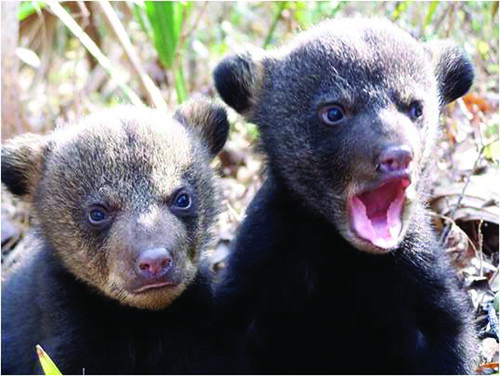
The Louisiana black bear was once abundant in the Mississippi River Delta. But by the 1950s, the population was severely diminished in Louisiana, mainly due to habitat loss. Luckily, a voluntary land conservation program offered by USDA’s Natural Resources Conservation Service (NRCS) is helping this threatened subspecies of the American black bear stage a comeback.
In 1950, estimates showed that only 80 to 120 bears remained in Louisiana, and these were restricted to the Atchafalaya and Tensas River Basins. Louisiana black bears require large contiguous areas of bottomland hardwood forest, which were once common to the Mississippi River Delta. However, large tracts of forest began to disappear with late-18th-century and early-19th-century advancements in farming and accelerated land clearing associated with record high prices for soybeans. Of what used to be 24 million acres of bottomland hardwood forest in the Lower Mississippi Alluvial Valley, less than 5 million acres remained in 1980.
Black bears are important in ecosystems because of their effect on populations of insects and fruits. They help to disperse the seeds of plants they eat and consume large numbers of colonial insects, carrion and moth larvae.
In an effort to increase the number of bears in the state, the Louisiana Department of Wildlife and Fisheries began a restocking program. However, the restocking was considered a failure. Instead, reversing habitat loss became the new strategy to increase bear numbers in Louisiana. One of the key methods to increase appropriate habitat for bears is NRCS’ Wetlands Reserve Program (WRP).
WRP restores marginal cropland, former and degraded wetlands, and riparian buffers on private lands. In the Lower Mississippi River Alluvial Valley, restoration consists of planting hardwood trees best suited for the site, restoring hydrology and creating small openings in canopy forests, which encourage the growth of desirable herbaceous growth. These steps are all integral to creating habitat for bears.
Bear numbers in Louisiana are now estimated at 500 to 700, and the population seems to be healthy and growing steadily.
For more information about the Wetlands Reserve Program, visit NRCS's website
More more conservation-related stories on the USDA blog.
Follow NRCS on Twitter.

